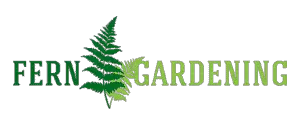Ground cover is an essential part of any garden design. It may be that large areas of the yard need to be filled with abundant growth, or that a dense layer of foliage is wanted beneath taller shrubs and trees, or that a layer of low-level surface cover is needed to suppress weeds or hide patches of bare soil. Ferns are an excellent choice for these important jobs, especially in shady parts of the garden.
The best ferns for ground cover depend on your goal. Royal, ostrich and hay-scented ferns are good for space filling for large areas, oak and holly ferns for good for forming dense layers of foliage, and maidenhair and painted ferns are ideal for soil coverage. The variety and versatility of ferns provides a lot of options when it comes to ground cover planting.
For each of the key purposes for ground cover there are a number of good ferns – both evergreen and deciduous – that can be chosen. Here are some of the best options for each type of ground cover.
Space-filling ferns
One common demand for ground cover is to fill a large space in the yard quickly. There are several varieties of fern that can meet this demand well.
First up are the Osmunda species ferns, led by the mighty Royal fern.
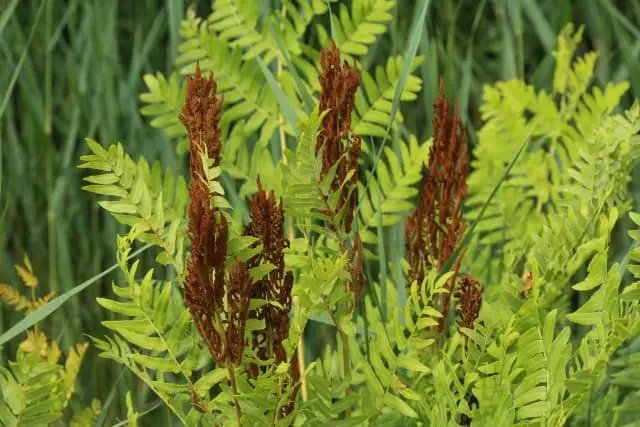
Royal fern
- Osmunda regalis
- Deciduous
- Full or partial shade, and full sun
- Height: up to 2.5 m
- Soil: acid, neutral or alkaline. Moist, poor drainage tolerated.
Osmunda ferns grow large – typically 4 to 6 feet (1.5 to 2 m) – and form wide spreading bushes. They are a particularly good choice for wet ground, but are adaptable and can survive in a wide range of conditions. The Cinnamon and Interrupted ferns are two other examples of the genus that grown into tall, wide and full bushes.

Cinnamon fern
- Osmunda cinnamomea
- Deciduous
- Prefers partial shade
- Height: up to 1.5 m
- Soil: acid. Moist, poor drainage tolerated.
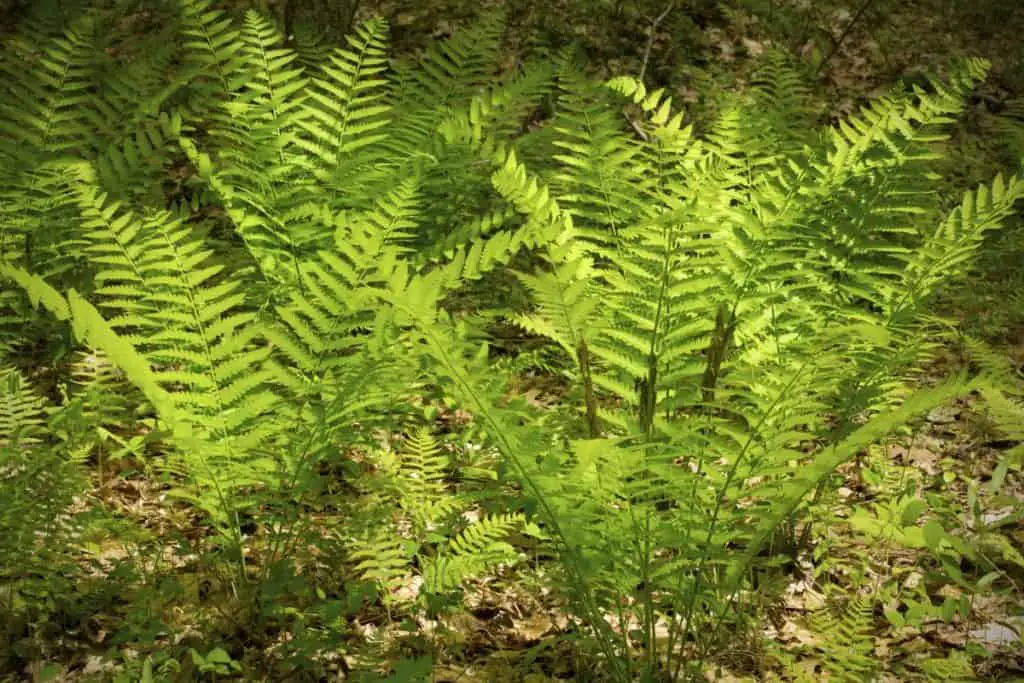
Interrupted fern
- Osmunda claytoniana
- Deciduous
- Prefers partial shade
- Height: up to 1 m
- Soil: acid. Moist, poor drainage tolerated.
Another classic space-filling fern is the Ostrich fern.
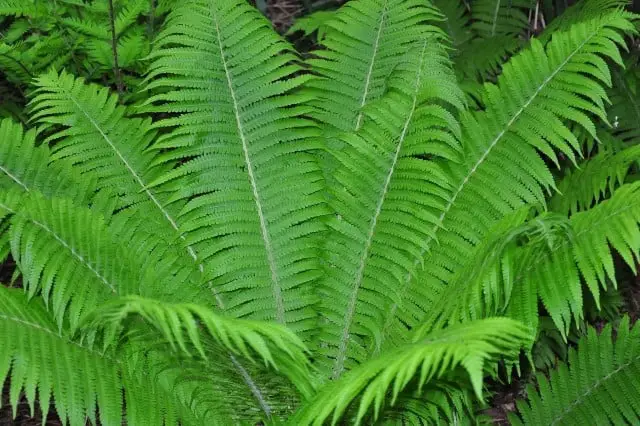
Ostrich fern
- Matteuccia struthiopteris
- Deciduous
- Full or partial shade
- Height: up to 1.5 m
- Soil: acid or neutral. Moist, well-drained.
This is a beautiful and stylish plant, with wide, feathery fronds that from an impressive shuttlecock-like fan. The Ostrich fern is deciduous, but will spread through the surrounding ground on creeping rhizomes, with new shuttlecocks springing up in the next growing season. In this way, a large area can be colonized over a few years.
Finally, for speed and range of spread it is hard to beat the Hay-scented fern.

Hay-scented fern
- Dennstaedtia punctilobula
- Deciduous
- Full or partial shade
- Height: up to 1 m
- Soil: acid or neutral. Moist, well-drained, and tolerates dry soil.
Although attractive in appearance, and having an unusual scent that gives the plant its name, this fern is invasive and should only be used where there is plenty of space available, or some physical barrier to constrain its spread. Otherwise it will take over and become a weed to fight, rather than ground cover to admire.
Weed-suppressing ferns
A second important role for ground cover is to provide a low canopy of foliage that shades the soil and suppresses weed growth. For this job, there are several fern species that grow to a more modest height of only a couple of feet, but spread a dense layer of fronds that fill the space between other plants or beneath trees and shrubs, adding visual appeal to a border or bed.
A good example of this principle is the Oak fern.
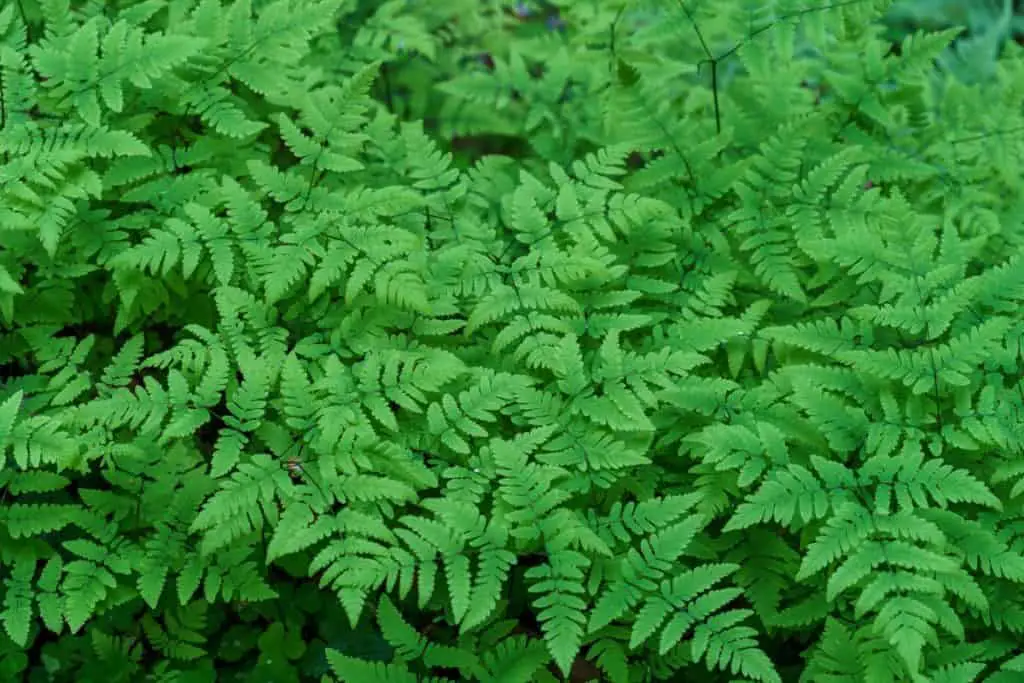
Oak fern
- Gymnocarpium dryopteris
- Deciduous
- Prefers full shade
- Height: up to 0.3 m
- Soil: acid or neutral. Moist, well-drained.
This variety has attractive yellow-green pinnae that resemble the classic oak-leaf shape, and can form a densely layered drift of fronds that provide excellent cover as a low-level canopy.
Another good option for a fern variety that grows densely and spreads through a border is the Polypodium genus. There are a number of species available, with a range of appearance and density. Southern polypody (Polypodium australe), and licorice fern (Polypodium glycyrrhiza) are bushy, dense varieties, but even common polypody can be relied on to fill available space quickly.
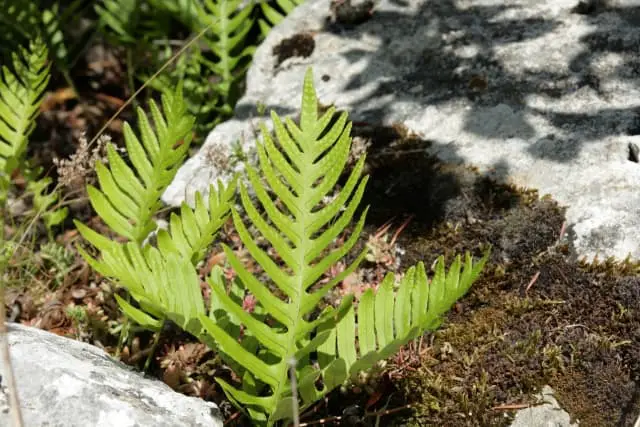
Common polypody
- Polypodium vulgare
- Evergreen
- Partial shade or full sun
- Height: up to 0.5 m
- Soil: Neutral or alkaline. Moist, well-drained.
It’s not always desirable to have ground cover varieties that spread, however. Sometimes, deliberate planting of crown-forming ferns can be used instead to provide local cover without risking invasion of neighboring plants.
A good choice for localized, dense cover are the Holly ferns. Although these varieties are not what you would typically think of when it comes to ferns, the glossy leaf-like fronds provide an excellent low canopy, and grow in bushy clumps that shield the ground beneath very effectively.

Holly fern
- Cyrtomium falcatum
- Evergreen or semi-evergreen
- Full or partial shade
- Height: up to 1 m
- Soil: acid, neutral or alkaline. Moist, well-drained.
As well as the common Japanese holly fern (Cyrtomium falcatum), there are related species with paler colored fronds, notably Cyrtomium fortunei.
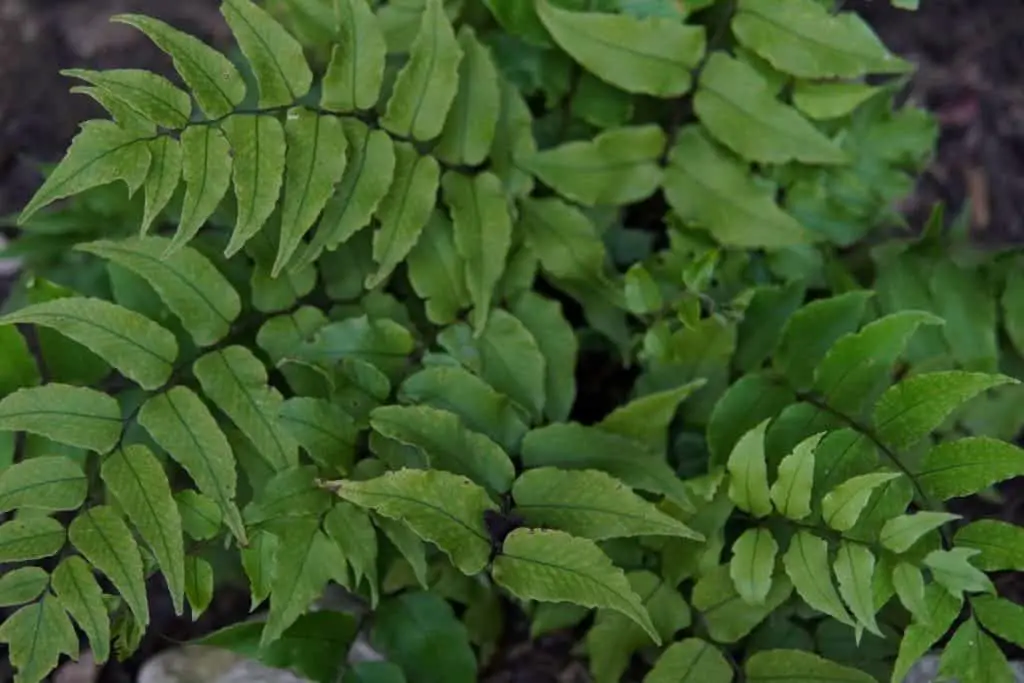
Another reliable choice for dense foliage, but with wide rather than tall fronds, are the Polystichum ferns. Soft shield ferns are the classic examples, but several varieties and cultivars have been bred that have a wide range of appearances.
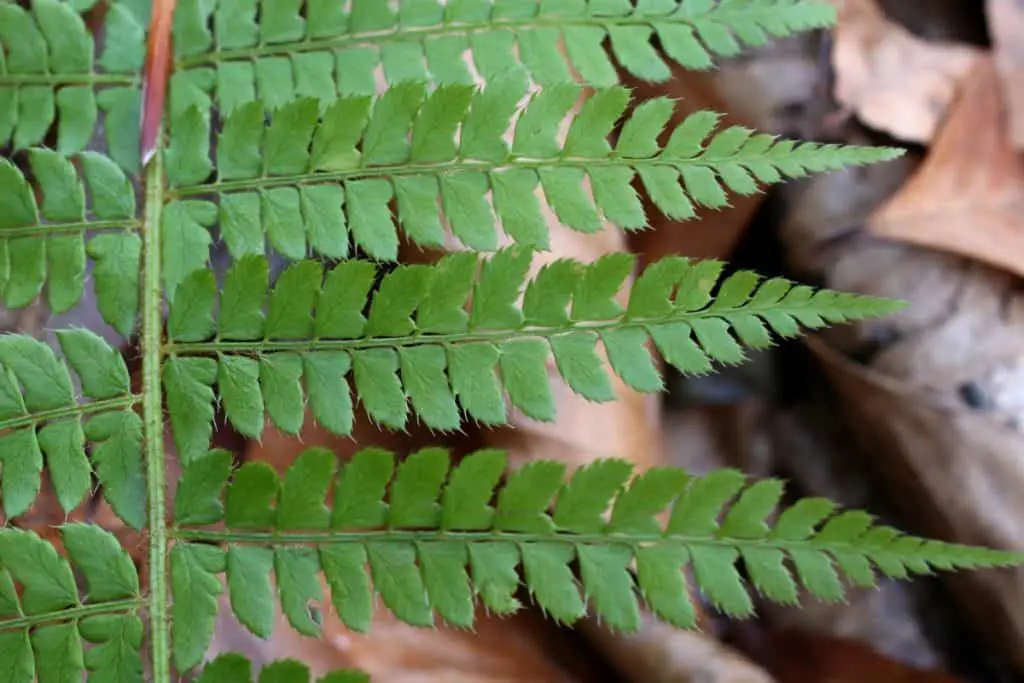
Soft Shield fern
- Polystichum setiferum
- Evergreen
- Full or partial shade
- Height: 0.5 – 1 m
- Soil: Acid, neutral or alkaline. Moist, well-drained.
In my own fernery, I have found that the cultivar ‘Herrenhausen’ sends long, but low-hanging fronds across the bed (often encroaching on neighbors) that provide good low-level coverage. Similarly, the (misleadingly named) Makinoi’s Holly fern forms dense, layered foliage.

Makinoi’s Holly fern
- Polystichum makinoi
- Evergreen
- Full or partial shade
- Height: 0.5-1 m
- Soil: acid, neutral or alkaline. Moist, well-drained.
Low-growing ferns
Perhaps the best example of ferns for ground cover are the varieties that form low, dense layers of fronds that run over the surface of the soil. These ferns form the bottom-most layer of any planting scheme, covering bare soil and crowding out any weeds that are trying to invade the border.
A good first example of this class are the Adiantum genus of Maidenhair ferns.

Northern maidenhair fern
- Adiantum pedatum
- Deciduous
- Partial or full shade
- Height: up to 0.5 m
- Soil: acid, neutral or alkaline. Moist, well-drained.
Although often thought of as indoor ferns, due to the tropical delta Maidenhair that is popular as a houseplant, there are several varieties that are hardy in most of the US and Europe. Examples include the Northern, Himayalan and Aleutian maidenhairs, which grow delicate fans of confetti-like pinnae that cover the ground.

Another excellent choice for dense ground cover is the Alpine water fern.
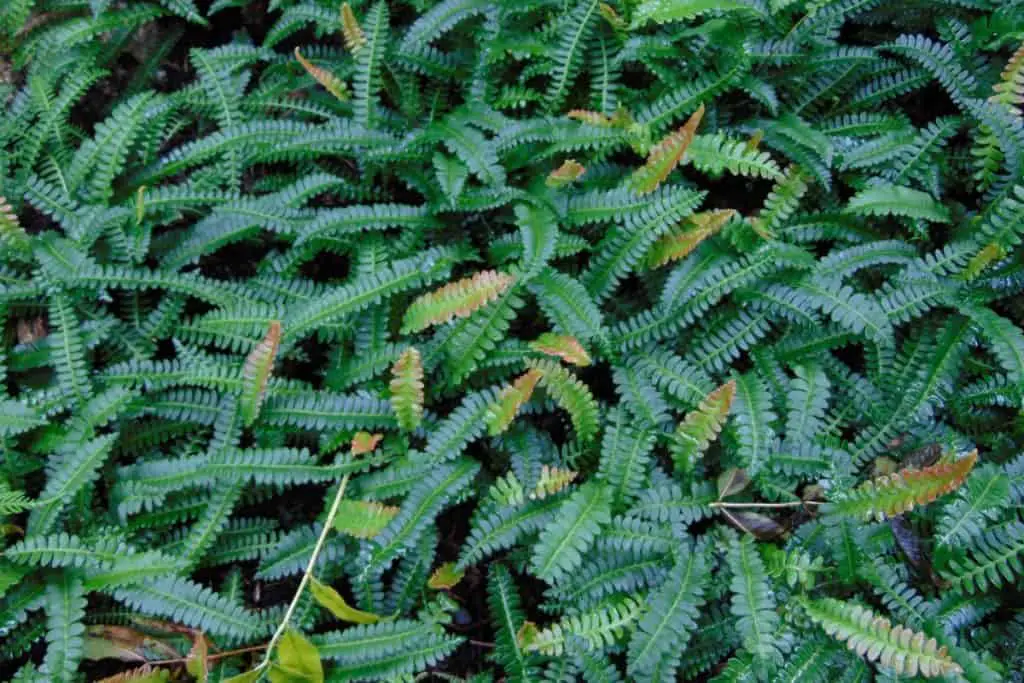
Alpine water fern
- Blechnum penna-marina
- Evergreen
- Shade, partial or full sun
- Height: up to 0.2 m
- Soil: acid or neutral. Moist, well-drained. Drought tolerant.
This forms mats of short fronds that overlay the soil. Newly emerging fiddleheads can have a lovely red-bronze tint, adding to the appeal.
Another popular choice for low-growing ferns are the Japanese painted ferns.
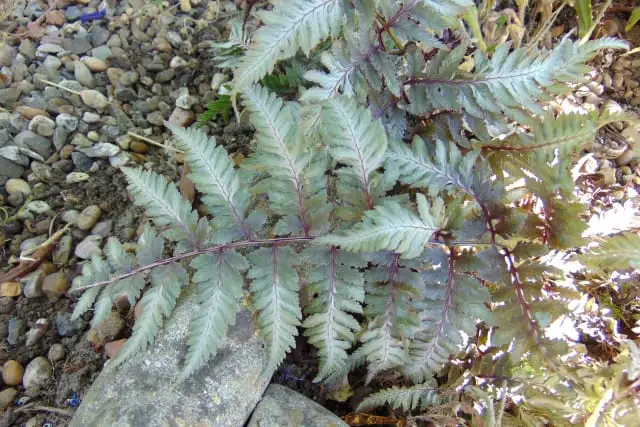
Japanese painted fern
- Athyrium niponicum
- Deciduous
- Prefers partial shade
- Height: up to 0.5 m
- Soil: acid, neutral or alkaline. Moist, well-drained.
There are a number of varieties and cultivars that vary in color and size. Japanese painted ferns do spread, forming neighboring clusters, but this is relatively slow, taking several years to form an appreciable colony.
Finally, for those seeking a really dense carpet of ground cover, the fern ally Selaginella kraussiana is a rare but striking choice. Though not a true fern, it’s hard to beat when it comes to ground cover.
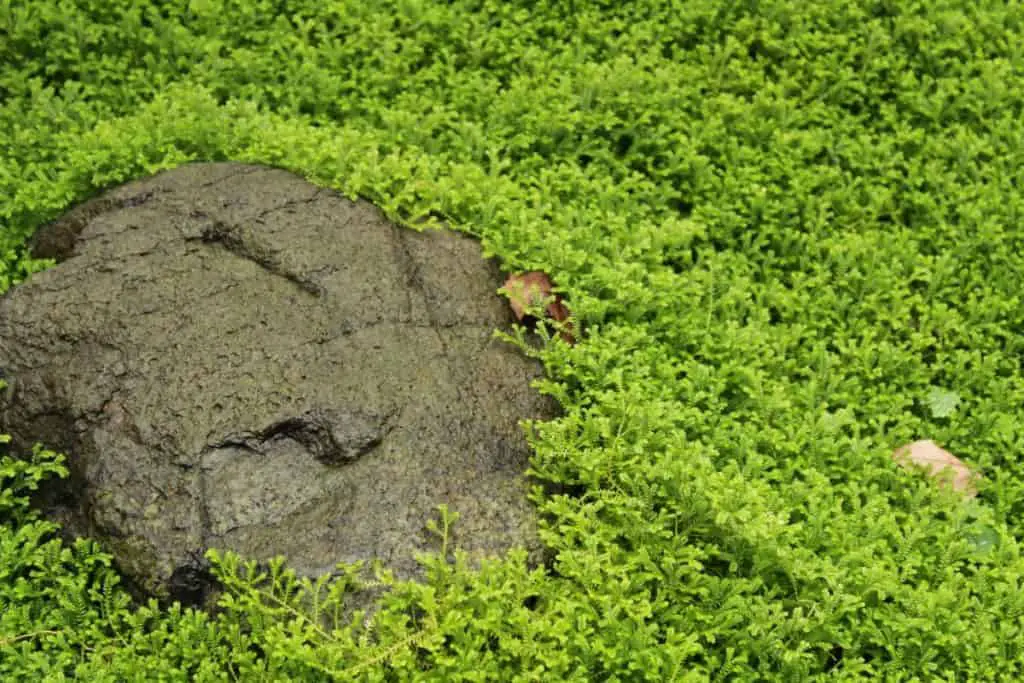
The versatility of ferns provides a range of options when it comes to adding ground cover to a planting scheme. Ferns can be chosen for height, spread, density, and coverage to meet the specific needs of any yard.
